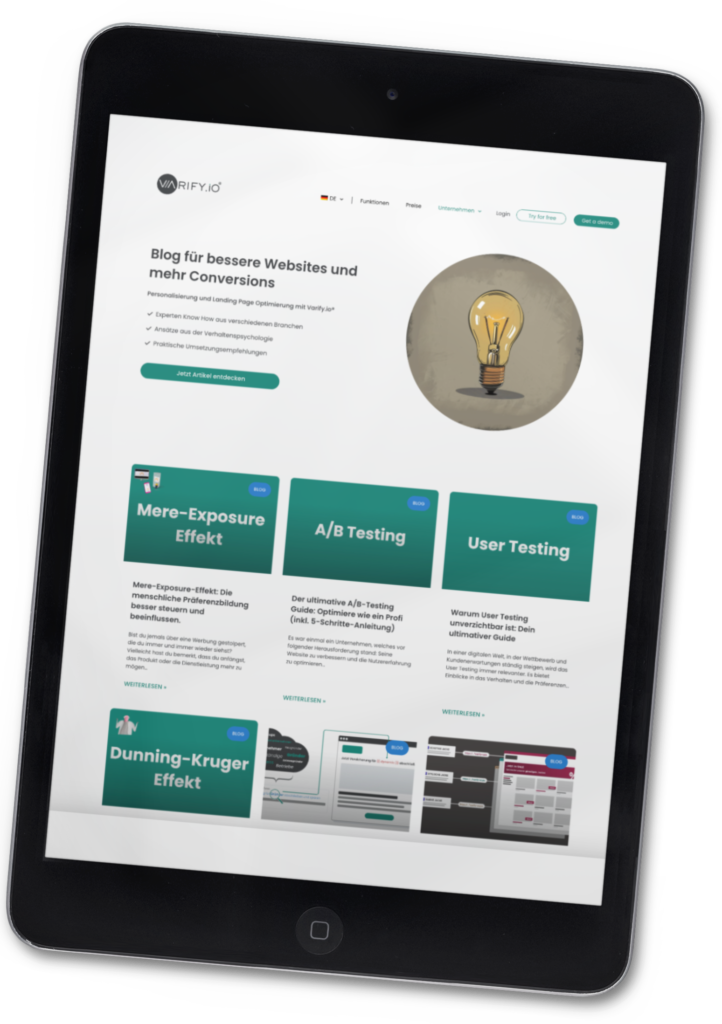Why do people buy?
Is it the price, the quality or simply the availability?
The truth is: purchasing decisions are rarely made purely rationally.
It is often emotions, psychological triggers and unconscious impulses that tip the scales.
This is exactly where sales psychology comes in: It shows you how to better understand and influence the behavior of your customers.
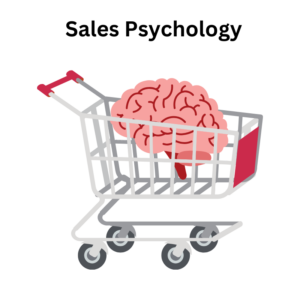
Table of contents
What is sales psychology?
Sales psychology is the science of how people make decisions and how you can specifically influence these processes in sales. It combines psychological findings with sales strategies to better understand customer behavior and respond to their needs.
The focus is on how you present your messages, products or services in such a way that they trigger positive emotions in the customer and motivate them to take action - i.e. to buy. Subconscious processes, such as the need for social affirmation or the desire for security, play a decisive role here.
In short, sales psychology is not just "selling", but understanding and addressing the people behind the purchase decision. It is an indispensable tool for anyone who wants to take their marketing or sales to the next level.
Why is sales psychology important?
1. decisions are rarely rational
Studies show that up to 95 % of our purchasing decisions are made subconsciously. A clever text, an appealing image or a limited offer are often enough to set the decisive impulse. Sales psychology helps you to trigger these impulses in a targeted manner.
2. trust is the foundation of every purchase
Nobody buys without trust. Sales psychology provides you with tools to systematically build trust - be it through social proof, clear communication or consistent brand values. If your customers trust you, they will not only come back, they will recommend you to others.
3. more conversions with less effort
Why guessing instead of testing? Sales psychology takes the guesswork out of the equation. If you understand how your customers think and feel, you can take targeted measures that work - from choosing the right colors to the optimal design of your online store.
4. you stand out from the competition
In a market where many are fighting for attention with discounts and aggressive advertising, you can score points with sales psychology. It allows you to address your customers in a more personal, emotional way - and thus be remembered in the long term.
10 important principles of sales psychology
Sales psychology is based on proven psychological mechanisms that can be used specifically to persuade customers. Here are the seven key principles that can increase your sales success:
1. cognitive dissonance
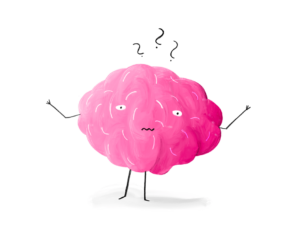
People want to be consistent in their thoughts and actions. If decisions or actions don't match up, an unpleasant feeling arises - known as cognitive dissonance. By affirming the customer after the purchase ("That was a great decision!"), you help them avoid this feeling and increase satisfaction.

2. scarcity
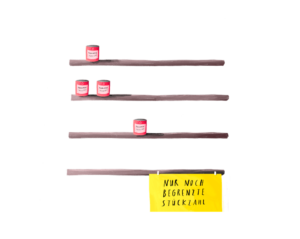
We want things more when they are in limited supply. Statements such as "Only 2 left!" or "Offer ends today!" create a sense of urgency that accelerates purchasing decisions.

3. social proof
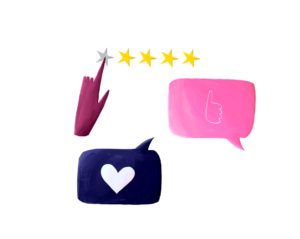
People are guided by the behavior of others, especially when they are unsure. Positive reviews, customer opinions, testimonials or the label "bestseller" create trust and show that others value your product or service.

4. reciprocity

The principle of reciprocity means that when someone gives you something, you want to give something back. A small gift, a free sample or a discount voucher can make customers feel obliged to buy from you.

5. anchor effect
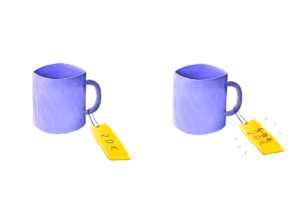
First impressions count. Prices or information that are presented first serve as a reference point for further decisions. For example, if you show a higher "before" price, the reduced "now" price appears more attractive.

6. loss aversion
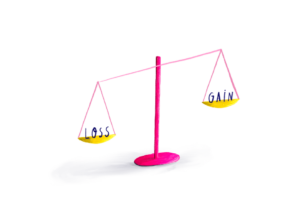
People feel losses more strongly than gains. You can use this principle by showing what customers could lose if they don't act. Phrases such as "Don't miss out..." or "Only available for a short time!" are particularly effective.

7. sympathy

Customers prefer to buy from people or brands they like. You can build sympathy by communicating in an authentic, friendly and approachable way. Show that you understand your customers' needs and are on their side.

8. framing effect
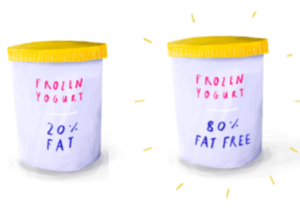
The way information is presented influences our decisions more than we think. A product sounds more attractive if it is described as "90 % fat-free" instead of "contains 10 % fat". Companies use the same principle to control the perception of offers - positively worded messages are more convincing.

9. halo effect

A single outstanding feature can distort our entire perception of a person or a product. We trust a brand to be of higher quality simply because its design appears high-quality, or automatically consider an attractive person to be more competent. Companies make targeted use of this effect through premium packaging, well-known testimonials or high-quality branding.

10. decoy effect
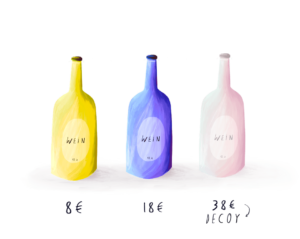
Our decisions are influenced by seemingly useless options. If a company offers three price tiers - small, medium and large - the middle one is often designed to make the largest version seem more attractive. Without the "decoy" option, we might have opted for the cheapest offer.

Why these principles work:
These principles are based on fundamental psychological processes that play a role in almost all decision-making situations. If you use them in a targeted manner, you can not only increase your sales figures, but also build lasting customer loyalty. It is important to use them authentically and responsibly in order to create long-term trust.
Would you like to delve deeper into the world of sales psychology? You can find detailed articles on many psychological triggers on our blog. Here are the articles.
Practical examples
Now it's getting practical! Sales psychology sounds exciting, but how do you implement the principles in everyday life? Here are specific examples of how you can use psychological triggers in your business, online store or sales department.
1st practical example: "Only 2 left in stock!"

Application: You have an online store and want to boost sales of a product.
- Clearly indicate that availability is limited ("Only 2 left in stock!").
- Add a countdown timer to increase the urgency.
Why this works:
Two principles play a role here: Scarcity creates a sense of urgency, and Loss Aversion drives customers to act quickly so as not to miss the opportunity.

2nd practical example: "Our customers love it!"
Application: Show real reviews and testimonials from satisfied customers on your product page.
- Mark a product as "Bestseller" or "Recommended by 90 % of our customers".
- Add photos or quotes from real users to create authenticity.
Why it works:
The principle of the Social Proof (social proof) gives people security by showing that others have made the same decision. Especially in uncertain situations, we like to orient ourselves towards others.
3rd practical example: "Today only - 50 % discount!"

Application: You send a newsletter with a limited-time discount offer.
- Formulate subject lines such as "Today only: Save 50 % on our bestselling product".
- Show a visual countdown or an expiring action in the email.
Why this works:
Loss aversion (fear of missing out) is the main driver here. Customers act to avoid the "loss" of the discount. In combination with scarcity, this has an even stronger effect.

4th practical example: "Thank you for your purchase!"
Application: After a purchase, you send a personal message with a small thank you, e.g. a discount code for the next purchase.
- "Thank you for ordering from us! Here's a 10 % voucher for your next order."
Why this works:
The principle of reciprocity comes into play here. Customers feel motivated to return the favor for your gift by buying again.
5th practical example: "Previously € 199 - now € 59!"

Application: You want to make a product look cheaper by presenting the previous price prominently.
- "Our bestseller: now only €49 instead of €99 - but only until Friday!"
- Add a visually striking price tag or banner.
Why this works:
The anchor effect ensures that the previous price serves as a reference. This makes the reduced price appear much more attractive.

Target group orientation in sales psychology
Not all customers are the same - and this is precisely where the art of target group orientation lies. Sales psychology only unfolds its full effect when you really understand the needs, preferences and decision-making mechanisms of your target group. After all, what works for an impulsive buyer is unlikely to convince an analytical decision-maker.
1. why target group orientation is so important
Imagine advertising a high-end product with a discount countdown. While this works like a magnet for bargain hunters, it could have the opposite effect on someone who values quality and trust. Sales psychology helps you to recognize and target these differences.
Conclusion: The more precisely you know your target group, the better you can adapt your sales strategies - and that leads directly to higher conversions.
2. customer types and their psychological triggers
a) The emotional buyer
- Features: Makes decisions based on instinct and is guided by appealing images and stories.
- Trigger: Emotional messages, warm colors, stories and social proof.
- Example: "Our customers love this product! See how it has delighted Anna."
b) The rational decision-maker
- Features: Analyzes prices, valuations and facts before buying.
- Trigger: Clear arguments, product details and convincing evidence.
- Example: "This product was rated positively by 92 % of our customers and is 30 % more efficient than the industry standard."
c) The impulsive buyer
- Features: Acts spontaneously and loves the feeling of making a deal.
- Trigger: Time-limited offers, scarcity, strong visual stimuli.
- Example: "Today only - 50 % discount on our bestseller!"
d) The security-oriented customer
- Features: Needs confidence and security before making a decision.
- Trigger: Guarantees, testimonials, "money-back" promises.
- Example: "100 % satisfaction guaranteed - or your money back!"
3. how to get to know your target group better
- Data analysis: Take a look at which products are performing particularly well and how your customers move through your store.
- Obtain feedback: Ask your customers directly for their opinion. What do they like about your offer? What could be improved?
- Segmentation: Divide your target group into different segments, e.g. according to age, gender, interests or purchasing behavior.
4. practice: personalization with psychology
The magic happens when you apply sales psychology specifically to individual target groups. Here is an example:
Product: A premium coffee machine.
For the rational decision-maker, the focus could be on the technical details: precise information on brewing technology, a comparison with competitor models and an indication of how much money can be saved in the long term thanks to the durability of the product. These facts provide security and create trust.
Buyers, on the other hand, could be presented with the same coffee machine in a completely different way. Here, the focus is on the experience: a narrative about how the perfect morning begins with the aroma of freshly brewed coffee, accompanied by images that radiate comfort and enjoyment. This creates an emotional desire for the product - it is not just a machine that is being sold, but an attitude to life.
Measuring success: KPIs
1. conversion rate
- What it measures: The percentage of visitors who complete a desired action (e.g. purchase, registration, contact).
- Why it's important: The conversion rate directly shows how effective your sales psychology strategies are.
Practical tip: Track how changes to your communication or design affect the conversion rate.
2. cart abandonment rate
- What it measures: How many customers abandon the purchase process before completing the purchase.
- Why it is important: High abandonment rates indicate that customers have uncertainties or psychological barriers.
Practical tip: Use social proof, guarantees or loss aversion triggers to reduce these barriers.
3. average order value (AOV)
- What it measures: The average amount a customer spends on a purchase.
- Why it's important: A higher order value means that your strategies such as upselling or anchor pricing will work.
Practical tip: Observe whether psychological measures such as bundle offers or cross-selling increase the order value.
4. repurchase rate
- What it measures: The percentage of customers who buy again.
- Why it's important: A high repurchase rate shows that customers trust your brand and are loyal to you in the long term.
Practical tip: Use reciprocity to strengthen customer loyalty (e.g. through small gifts or personalized offers).
Microconversions: the small successes count
Microconversions are small but significant steps on the way to the main conversion, such as clicking on a call-to-action, adding a product to the shopping cart or filling out a form. They are so important because they give you valuable insights into where customers are in their decision-making process and where potential obstacles might lie. These small successes help you to better understand the user journey and uncover targeted optimization potential.
Advantages:
- They help to better understand the user journey and identify optimization potential.
- You can see which content or functions particularly appeal to customers.
- They offer a quick sense of achievement and show whether psychological triggers such as scarcity or sympathy are effective.
Practical tip: Track microconversions separately and check whether changes in your store or on your website have a positive impact on these steps.
A/B testing: test what really works
To ensure that your measures actually deliver the desired results, you can use A/B testing. This involves testing two versions of a page, a design or a message against each other to find out which version is better received by your target group.
Advantages:
- You can use data to decide which psychological triggers (e.g. social proof or scarcity) have the greatest effect.
- A/B tests avoid guesswork and help you to optimize your strategies in a targeted manner.
Practical tip: Use tools such as Varify.io to carry out A/B tests easily and efficiently. Varify.io offers you clear analyses and intuitive functions to find out which adjustments in your store will bring the greatest success.
Sales psychology and ethics
Responsibility towards customers
The use of sales psychology means responsibility. Customers trust brands to act transparently and honestly. Psychological principles such as scarcity or social proof should not be used to deceive or take customers by surprise, but to help them make a decision.
Example: If you advertise with "Only 2 left in stock", there should really only be two products left in stock. Anything else would be a deception that destroys your customers' trust in the long term.
Trust as a basis
Long-term success is based on trust. Customers who feel manipulated may buy once - but they won't come back. Responsible sales psychology aims to address honest needs and offer real added value.
Ethics tip: Communicate clearly what benefits your product offers without creating unrealistic expectations. Your customers will thank you for it.
Avoid manipulation
Manipulation begins where customers make decisions that they later regret. The aim is to motivate customers - not to pressure them. Excessive use of fear of loss or unrealistic promises can not only damage trust, but also have legal consequences.
Example of manipulation: A time-pressure advertisement ("Only valid today!") that renews itself every day is not only dishonest, but also frustrates customers who see through the trick.
Authenticity as the key
People want to buy from real brands that stand behind their promises. Authenticity means that your sales strategies match your values and your product.
Example: If you are promoting sustainability, you should also make sure that your sales strategies are honest and transparent in your communication - and not use aggressive "buy now!" tactics.
Summary
Sales psychology should always be applied with a sense of fairness and responsibility. It is not about tricking customers, but about understanding them and making it easier for them to make the best possible decision. Authenticity, transparency and trust are the cornerstones of sustainable success.
Conclusion
Sales psychology offers you proven techniques to better understand your customers' behavior and respond to it in a targeted manner. Regardless of whether you create urgency through scarcity, build trust with social proof or use the principle of reciprocity with small gifts. It is often the small measures that make a big difference.
The practical examples presented show: Sales psychology is not a theoretical concept, but a powerful tool that you can use directly in your everyday life. It is important to apply the principles authentically and responsibly in order to build trust and long-term customer loyalty.
Individual references
- 360Connect: What is Sales Psychology? [Accessed on: 27.01.2025]
- Freedom to Ascend: How Is Psychology Used In Sales? [Accessed on: 29.01.2025]
- Husam Jandal: Simple Psychology Techniques That Power Successful Campaigns. [Accessed on: 30.01.2025]

